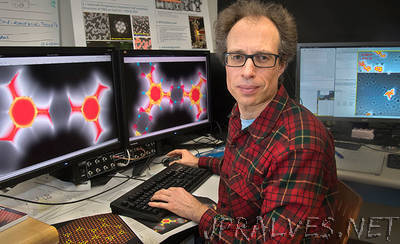
“For physicist Percy Zahl, traversing surfaces is not only a long-time hobby of his but also the focus of his research. An avid cyclist who is part of the Green Arm Bandits of the East End Cycling Team, he has pedaled more than 10,000 miles in 2016 alone, competing in races as close to home as the New York tri-state area and touring in places as far away as Chile. Weather permitting, he bikes the 20 miles it takes each day to make the round trip between his home and the U.S. Department of Energy’s (DOE) Brookhaven National Laboratory, where he covers terrain of a different kind—mapping the atomic structure and electronic properties of material surfaces through scanning probe microscopy (SPM). Since 2005, Zahl has been working as an associate scientist at Brookhaven’s Center for Functional Nanomaterials (CFN), a DOE Office of Science User Facility. He came to Brookhaven from a postdoc position at IBM Zurich, where SPM was founded, with the invention of the scanning tunneling microscope in 1981. In 1994, Zahl began developing control software for scanning tunneling microscopy (STM). At the time, he was attending the Institute for Solid State Physics at Leibniz Universität Hannover, working on his thesis with a group in Germany that had microscopes but lacked the financial means for a full-scale commercial system. This software later evolved into what is known today as Gnome X Scanning Microscopy, or GXSM, an open-source software that enables scientists to acquire and interactively visualize data from digitally controlled scanning probe microscopes and similar instruments, in real time and offline.”
